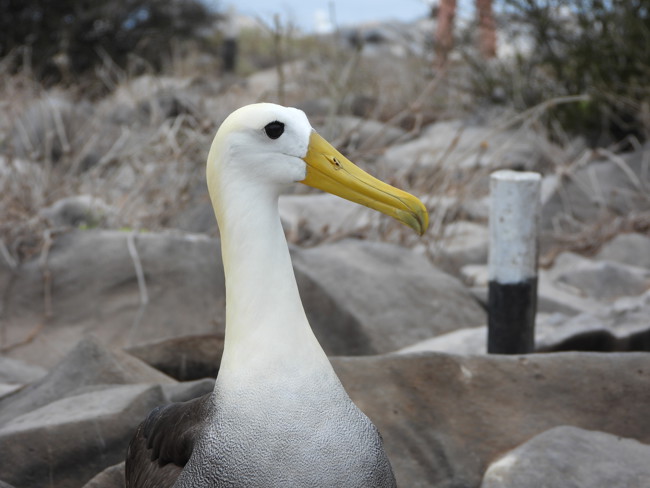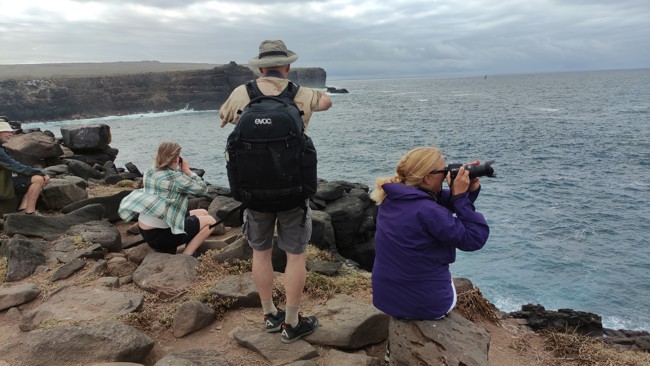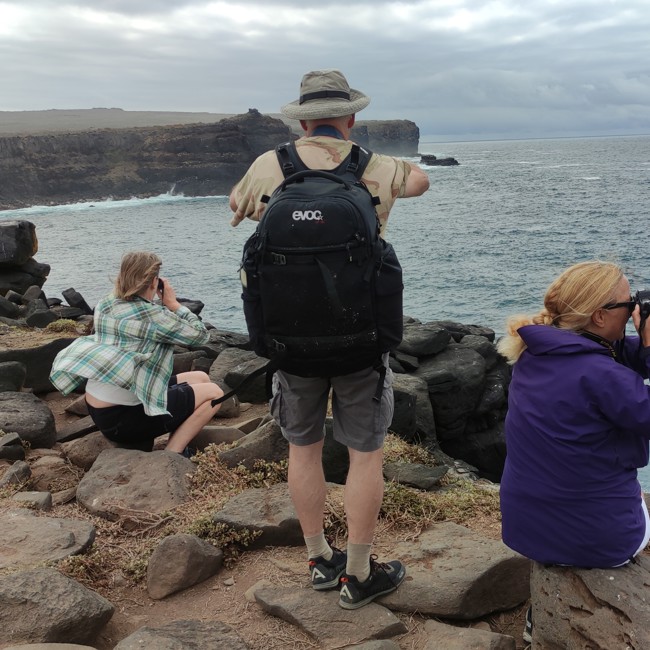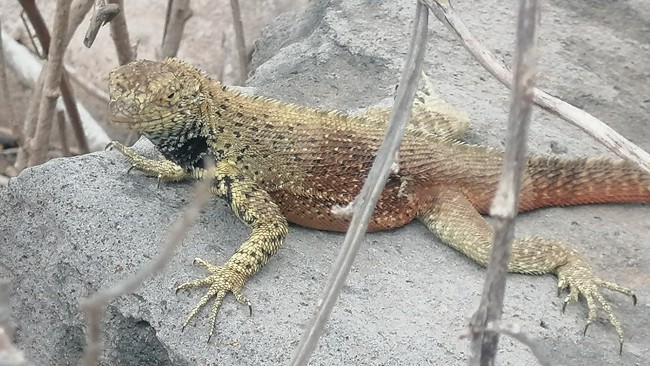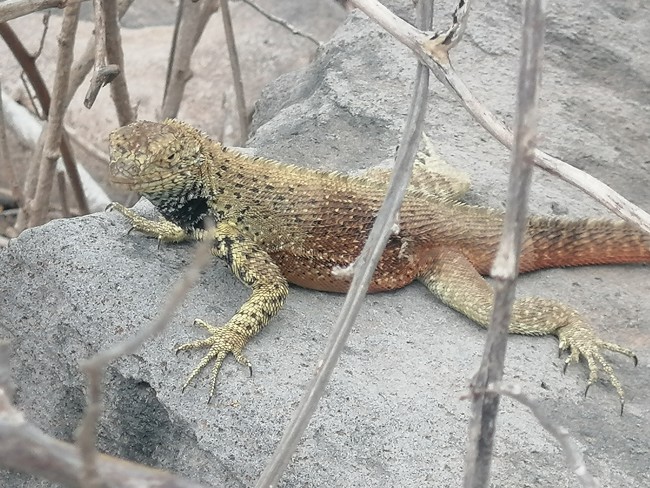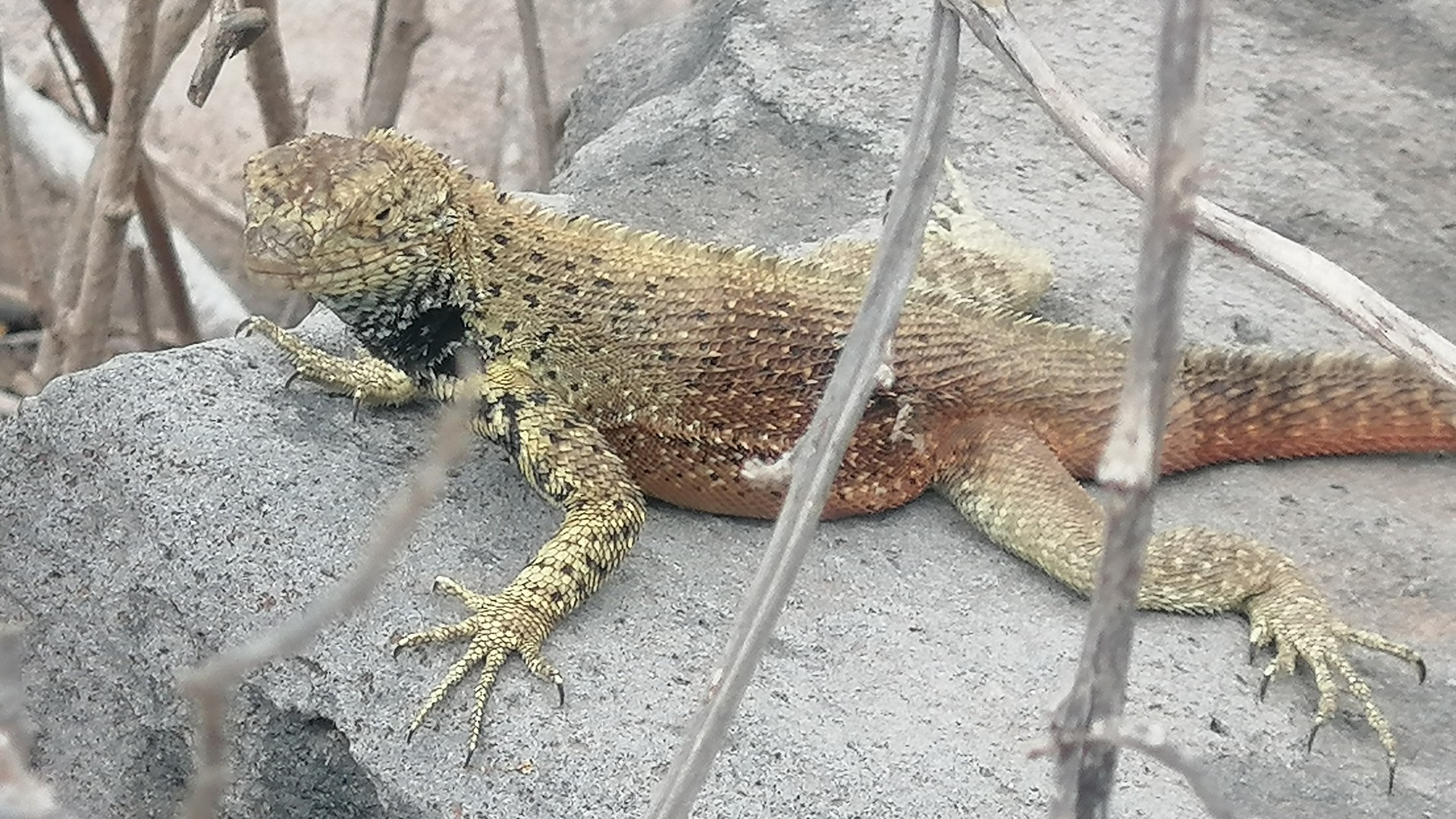The day begins just before sunrise. From the deck we can see the outline of Española Island a few miles to the east. With its 22,000 pairs, it is home to nearly 98% of the world's population of Galapagos albatrosses, which is the main reason for our visit. At sunrise, we take two rubber boats to the beach where we walk among lots of marine iguanas, Galapagos sea lions and Darwin's finches.
On a sea mark, two Galapagos hawks sit and preen themselves in the morning sun. Given the amount of animals we encounter, it's fascinating how little they care about us, and you have to watch where you put your feet to avoid a marine iguana or a sleeping sea lion.
We walk slowly up from the beach on a rocky path lined with nazca boobies and blue-footed boobies. Above us, magnificent frigatebirds sail alongside swallow-tailed gulls. Suddenly we come across our first albatross. It stands in the middle of the path and seems to be watching another albatross a few meters away. With clumsy steps, it approaches the other albatross and begins to gently court the other bird. At first it is a little hesitant, stamping its feet and raising and lowering its head, but as the other bird responds, its movements become more and more confident.
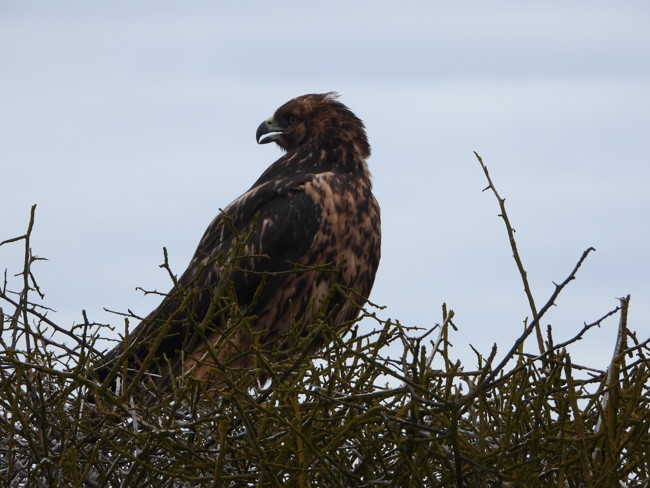

After a minute or so, both birds dance enthusiastically with each other, stamping their feet out of time, flapping their beaks and their wings and raising and lowering their heads. After fifteen minutes or so, we leave the birds alone and continue carefully through the colony of albatrosses. Here and there are downy gray chicks quietly waiting for one of the parents to come back with food.
After a couple of hours on the island, we head back down to the beach to get back to the ship. The sun is high in the sky and the next activity of the day will probably be a snorkeling trip around a nearby reef.
Text: Martin Berg
